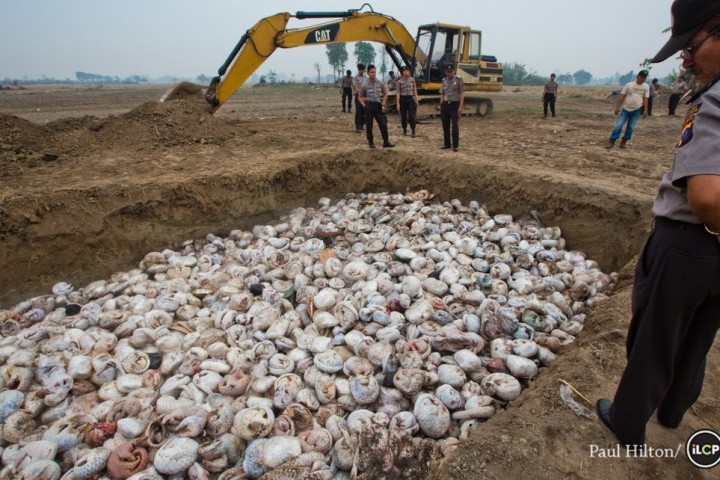The truth about pangolins and Covid-19
Meanwhile, the idea that pangolins played a role in the emergence of Covid-19 has not gone away.
On 17 March, a team led by Kristian Andersen at Scripps Research in La Jolla, California, published a detailed analysis of the virus’s possible origin in Nature Medicine. They say the ultimate source is likely to be bats, just as it was for the two other coronavirus outbreaks of recent years: Sars and Mers. Bats are a known reservoir of coronaviruses. Furthermore, intermediate horseshoe bats are known to carry a virus called RaTG13, whose genome is 96% identical to that of Sars-CoV-2.
“It’s pretty clear the bat serves as the reservoir for this,” says Andersen. The question is how the virus travelled from bats to humans. “We are entertaining two different scenarios.”
The key question is how the virus acquired certain sequences of its genome, which allow it to bind strongly to human cells and thus infect them. The bat virus does not have these sequences.
One possibility is that the bat virus made the jump to humans several months before the outbreak was detected. These early viruses would not have been especially infectious or dangerous, but they could have mutated and evolved to acquire the key genetic sequences that made them infectious.
The alternative possibility is that there was an intermediate host. “That’s where the pangolins come in,” says Andersen. While the pangolin virus as a whole is less similar to Sars-CoV-2 than the bat virus, the pangolin virus genome does have the crucial binding sequences. This is what Shen, Xiao and their colleagues found – and it has now been supported by a further study from another Chinese group.
Furthermore, a study published on 26 March in Nature discovered viruses closely related to Sars-CoV-2 in pangolins that had been smuggled into China. These viruses had binding sequences similar to those in the human viruses.
“Where it’s really important is where they’re identical,” says Andersen. “While the bat virus overall is more similar, in the regions where it really matters it’s actually quite different.”
This suggests that the bat and pangolin viruses met, perhaps in the same host, and exchanged genes. Some of the bat viruses ended up with the key binding sequences from the pangolin viruses, enabling them to infect humans and unleash a pandemic. “Recombination is frequent in these types of viruses,” says Andersen. “It’s speculative, but it’s highly likely that that’s how we ended up with this new virus.”
A similar story played out before the Sars outbreak of 2002-2004. The original source of the virus was wild bats, and in 2017 researchers managed to identify a cave in China where the bats carry viruses that are virtually identical to Sars. However, the virus was probably passed to humans via civets, which are cat-like animals, leading to China imposing a temporary ban on selling civets. The more recent Mers outbreak probably moved from bats to humans via camels.
However, says Andersen, we cannot yet be sure which scenario is correct. Even if there was an intermediate host, it may not have been pangolins.
“We cannot conclude if pangolins are indeed [the] intermediate species,” agrees virologist Arinjay Banerjee of McMaster University in Hamilton, Canada.
Ending demand
The question of whether pangolins contributed to the Covid-19 outbreak will not be settled any time soon. “It’s probably going to be a long, drawn-out question,” says Andersen. Resolving the origin of Sars took years.
But it may be crucial to ending the pangolin trade, because doing so requires two things. The first is strict enforcement of the rules, which China seems to want to do – it was stepping up enforcement even before the outbreak. The second is for people to stop buying pangolin products. If there is no demand, the illegal trade will become unprofitable, and suppliers will abandon it.
“Just the fact there’s been all this publicity about the potential link to pangolins will probably lead to plummeting demand for them,” says Richard Thomas, head of communications at Traffic in Cambridge.
There is evidence that he is right. According to Yuhan Li of the University of Oxford, Chinese conservation organisations have been circulating a questionnaire on social media to see how people’s attitudes have shifted. More than 100,000 people have responded, and more than 90% say they would support a total ban on the trade in wild animals, no matter what the intended purpose. It is unclear if people will stick to this once the Covid-19 crisis has passed, but Ling is planning a campaign to strengthen opposition.
The realisation that wildlife markets allow diseases to spread to people may spur action. When China announced the ban, the World Wide Fund for Nature (WWF) called it “a timely, necessary and critical step” – not just for safeguarding the wild animals, but for human health. “This public health crisis must serve as a wake-up call to end the unsustainable use of endangered animals and their parts, whether as exotic pets, for food consumption or for their perceived medicinal value.”
In the best-case scenario, it will not just be pangolins that benefit. Reducing the demand for illegally traded wildlife will help many species – and protect us all from future pandemics into the bargain.



